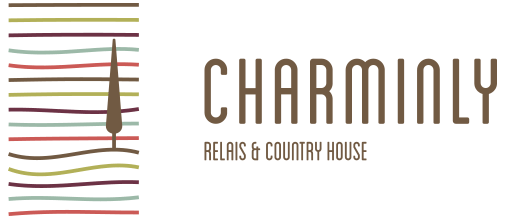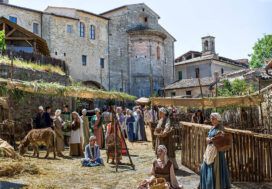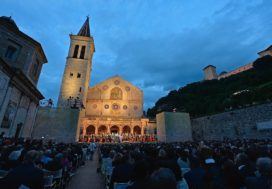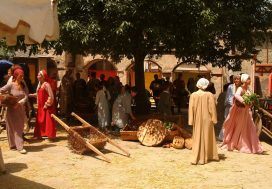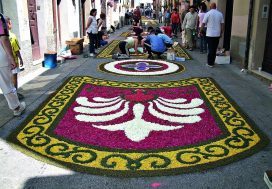PROCESSIONE DEL CRISTO MORTO
In the Holy Friday morning, the Dead Christ is moved from the Cathedral of St. Rufino to the Basilica of St. Francesco, stopping at the cloistered convents; in the evening, it is followed by an evocative parade, in which takes part each confraternity that leaves the Basilica and goes through a part of the City.
ASSISI ANTIQUARIATO
In the enchanting hamlet of San Francesco, the Assisi Antiques takes place; it is a periodic event known all over the Europe, dedicated to all of the enthusiasts. It is an unmissable kermesse for both academics and collectors, but also for simple lovers of the beauty. It is the best that the international scenario could offer, and it is proposed within a unique and marvellous background, which is Assisi. Assisi Antiques encloses, therefore, propositions of rare awesomeness and beauty, which can be admired by the general public.
GRIFONISSIMA
The most awaited running event in Perugia definitely is the Grifonissima, an appointment that gathers various entities from the surroundings, each one under the same sport ideal, besides aiming to underline the respect to the nature and highlight the old town beauties. The Grifonissima has been set since 1981, and today it has become a major sport event, for both challengers and public.
CALENDIMAGGIO
The origins of the festival called Calendimaggio are lost in the mists of time. Undoubtedly pagan, it celebrates the comeback of the spring; therefore, the traditional feast of Calendimaggio belongs to those traditions linked to the renewal of the cycle of life, a precious custom to the Umbrian people. Thereby, it is a true hymn to the rediscovered enjoyment of life, of love, which comes right after the cold and gloomy wintery days. Dances, performance of poems, combined with wine toasts, revive this ancient celebration of the buds season.
FESTA DEI CERI
The Feast of Ceri is an unmissable event that, since centuries, takes place on the 15th of May. It is a wild race where the traditional Ceri (three imposing wooden structures weighting about 100 kilos each and form the base of the statues of Sant’Antonio, San Giorgio, and Sant’Ubaldo) are carried by shoulders along the alleys of Gubbio, until the summit of the Mount Ingino. Here stands the basilica entitled to Sant’Ubaldo, who is the saint patron, died in 1160, to whom the Feast of Ceri is dedicated. Every year, this traditional and heart-felt feast, which is really popular, is permeated by truly deep feelings.
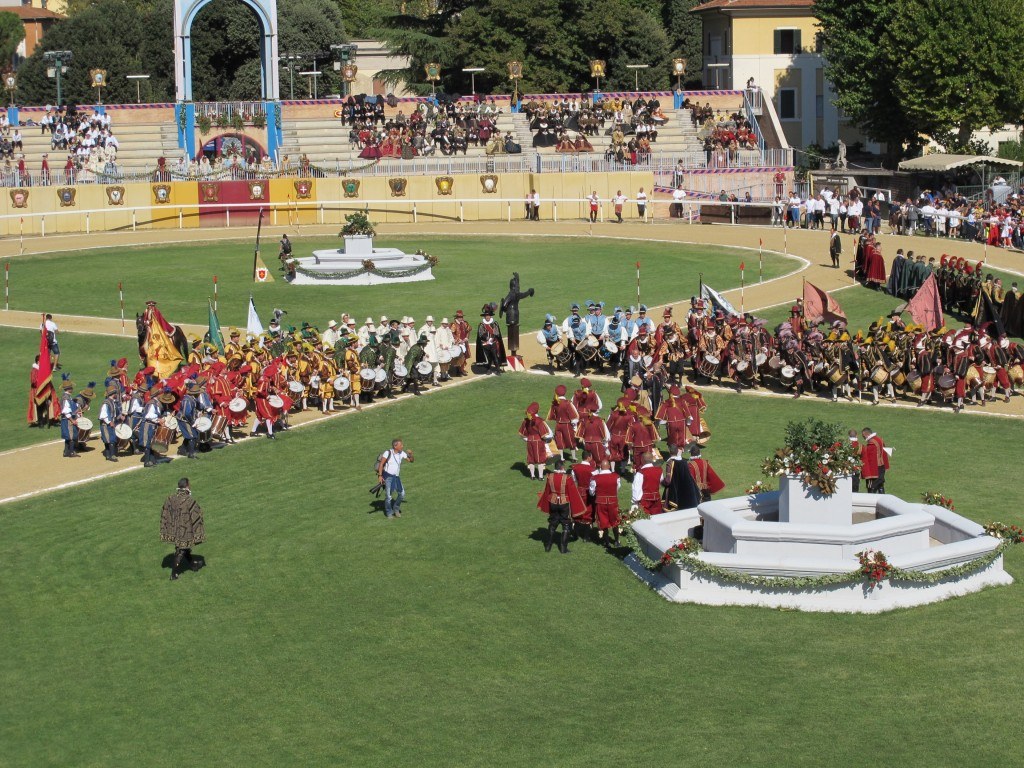
Carousel of the Quintana Foligno
INFIORATE CORPUS DOMINI – SPELLO
In Spello there is another feast that takes places: the Infiorata, which is the main event of the Corpus Domini weekend. Almost every side event comes with the free entrance. There are also many contests related to photography, to floral cake design, etc. In particular, the competition that involves the whole town called “Finestre, balconi e vicoli fioriti” (windows, balconies, and flowered alleys) has a unique charm. Finally, you cannot miss the “Notte dei fiori” (night of flowers), when the decorators make real paintings made of flower petals on the street pavements, for the Sunday morning procession.
GIOSTRA DELLA QUINTANA
The Carousel of the Quintana comes from the first half of 1600, even if we have knowledge of a Carousel of Knights since 1497. In 1600, Foligno was a possession of the Church, ruled by a governor who lived in Mansion Trinci, and by a Council, counting one-hundred counsellors, each one belonging to noble lineages. In 1613, the notary Ettore Tesorieri revived the Carousel of the Quintana, by municipality order, defining its manners and its nature by regulation. The first match took place on the 13th February 1613, in the evening.
It consisted of trying to beat, for three times, the face of a statue with a spear, in such violent way that the spear would have broken into pieces, galloping their own horse in the meanwhile. The score depended on which part of the face of the statue that was beaten. Nowadays, the Carousel of the Quintana, undoubtedly, is our most engaging and difficult ring carousel of the whole Italy. In fact, it has been stated the Olympics of equestrian competitions.
MERCATO DELLE GAITE
The town of Bevagna is the background of the Mercato delle Gaite, which is inspired to the ancient division, from the medieval Age, of its four districts (the Gaite or Guaite). The feast, so, has a medieval mark and duration, and on this occasion, they set up workshops for the ancient crafts and the taverns offer many dishes of medieval origin. There are also tournaments and challenges, such as the food-and-wine one, the archery, and the ones relative to crafts and to the medieval market.


